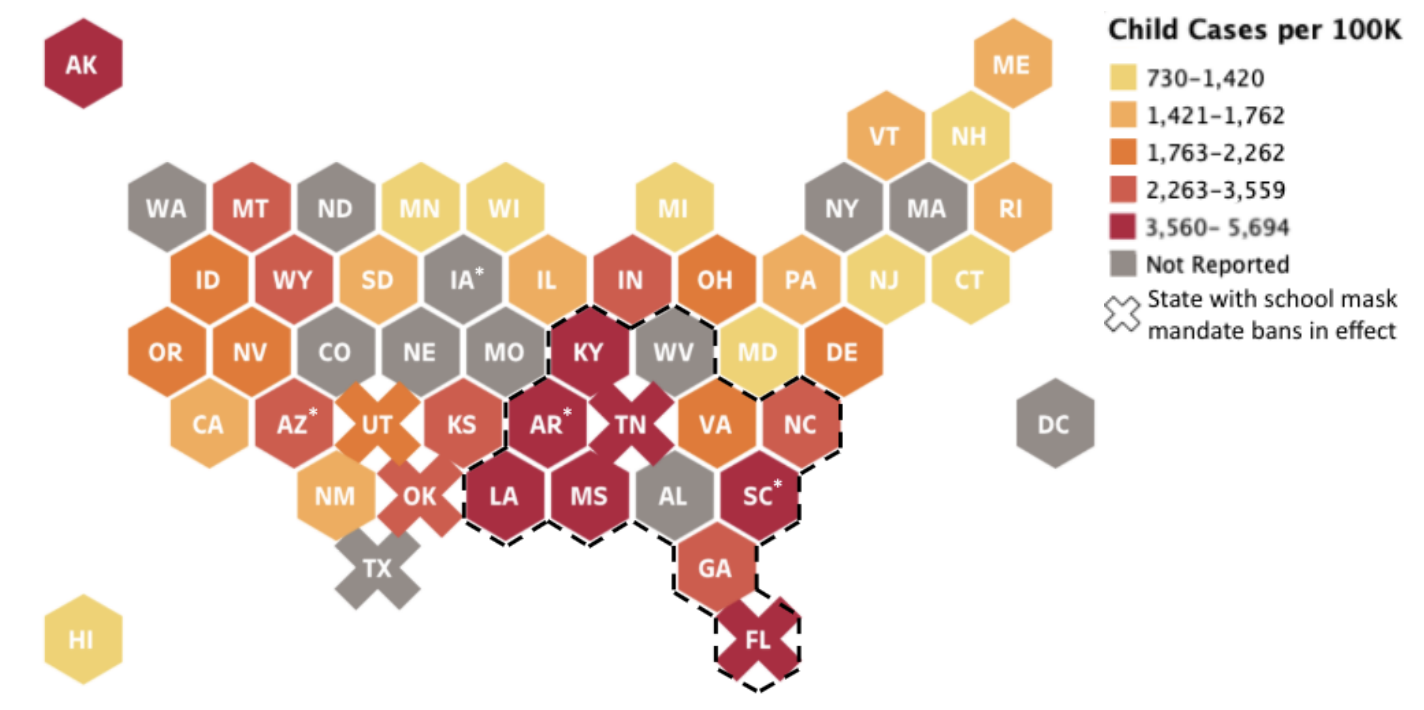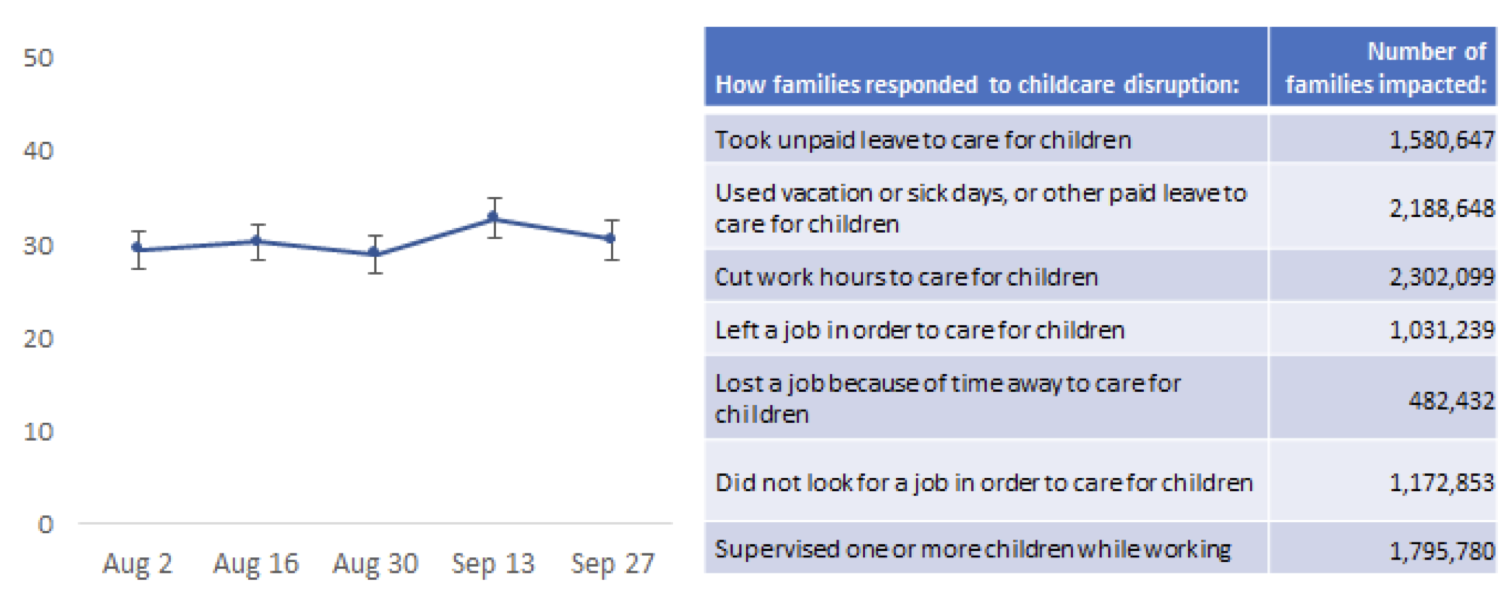Select a Data Category....
Explore Pandemic to Prosperity Data
Browse our data snapshots on topics like housing, jobs, health and more. View our full reports here.
Worker Retention
Since January 2021, 30 million workers have quit their jobs. The pandemic caused workers to rethink their options, with some upskilling to transition to higher-paying occupations. Generally speaking, workers are demanding higher wages and better working conditions.
Hospitalizations by Race
The most recent data on hospitalizations shows that Black individuals are 2 times more likely than white individuals to be hospitalized due to Covid. This graph reflects the truism that crises exacerbate disparities –– the gap between racial outcomes increases during the peak pandemic waves, and then the lines coalesce when overall rates are lower.
Monthly Poverty Rate by age group
Estimates of monthly poverty rates during the pandemic highlight the benefit of annual Child Tax Credit (CTC) and Earned Income Tax Credit (EITC) payments for children and working-age adults. They also illustrate how stimulus and expanded unemployment payments reduced financial hardships, particularly for children.
Well-being of LGBT population
While LGBTQIA+ people remain unseen in many official statistics, the Census Bureau, through its Household Pulse Survey, is providing needed visibility on the experience of lesbian, gay, bisexual and trans people in America during the pandemic.
Symptoms of Anxiety or Depressive Disorder
The share of adults experiencing anxiety or depression roughly tripled when the Covid crisis hit.
Likelihood of eviction or foreclosure by state
39% of Southern adults who are late on housing payments are afraid they will be evicted or foreclosed upon in the next 2 months. Cities and counties can mitigate a wave of homelessness and instability by enacting one or more ordinances that hold landlords accountable for unjust evictions, and stop eviction processes when past due rent is paid with reasonable late fees.
Food Insecurity by state
Putting food on the table has been a problem throughout the pandemic as low-wage workers suffered heavy job losses. More than 1 in 10 Southern adults reported their families didn’t have enough to eat in September.
Employee Vaccine Requirements
Many large corporations announced vaccine mandates for new hires, employees interfacing with customers, and employees returning to offices. In contrast, 75% of small businesses in the U.S. do not require employees to have proof of vaccination — possibly for ideological reasons, and possibly due to challenges finding workers. 12 states have banned vaccine mandates, making it more difficult for smaller businesses to institute vaccine requirements.
Employment Rates
The nationwide employment rate of 58.7% is 2 percentage points lower than Feb 2020. Black and Hispanic workers have been hit particularly hard with employment rates down 3 to 4 percentage points. In September 2021, the employment rate for men inched up to 66.7%, while the employment rate for women was stagnant at 54.7%.
Health Insurance Coverage
States refusing Medicaid expansion contributed to 16% of working-age Southerners lacking health insurance compared to 11% outside the South. The pandemic accelerated changes in U.S. employment, with part-time workers increasingly lacking health insurance and full-time workers increasingly securing this life-saving benefit.
Child Covid Cases
9 of the 12 Southern states had among the highest pediatric Covid case rates in the nation, with 2 Southern states not reporting data on children. Researchers found that counties without school mask requirements were more than 3 times as likely to have Covid outbreaks than those with mask requirements.
Child Care Disruptions
With the reopening of in-person schools nationwide, many were hoping that parents would be able to pivot back to the workforce. However, child care disruptions continue to leave families with children under 5 in a lurch. The common thread behind closures is a mismatch between what families can afford to pay for child care versus what constitutes a competitive, livable wage for qualified workers.
Internet Access
Broadband internet access has become an essential utility for every American family. It is particularly important for school children to support homework and education. According to the most recent data (2019), 46% of Southern counties have poor internet access, whereas only 16% of counties outside the South have poor access.
Climate Disasters
Climate disasters have compounded the nation’s misery since the pandemic struck. Disasters have been most frequent in the South such that 68% of Southerners have experienced a disaster over the last 18 months compared to 55% of non-Southerners.
Insufficient Unemployment Benefits
State unemployment benefits in Southern states are insufficient to cover basic household expenses, except in Kentucky. Moreover, 5 Southern states cut off benefits sooner than the national average.
Civil Unrest
The United States has a long history of protests as an important and effective form of civic activism. Nearly 2,500 protests have taken place across the South since January 1, 2021 — occurring across every state.
News Deserts
With many upcoming local elections covering important and rapidly-changing policy decisions regarding Covid, local news sources are an essential platform for both transparency and public understanding of proposed policy measures. Since the pandemic, over 100 local newsrooms in Southern states have closed, merged, or laid off/furloughed employees.
Voter Access
Despite concerns that the pandemic might depress voting rates, voter turnout was at a record high in the 2020 presidential election. Since the 2020 election, there has been a series of restrictive voting laws introduced across the country.



















